The concept of training a pet bird to live freely outside its cage while ensuring it doesn’t fly away is an intriguing proposition that beckons to both bird enthusiasts and curious pet owners.
While the idea of can a pet bird be trained to live without a cage and not fly away might seem daunting, it’s a testament to the bond that can be forged between humans and their feathered companions.
The delicate balance between a bird’s natural instincts and a caregiver’s efforts to foster trust and obedience forms the foundation of this endeavor.
With the right approach, patience, and a deep understanding of avian behavior, the prospect of allowing a pet bird to explore the world beyond its cage becomes an exciting journey of companionship, communication, and mutual respect.
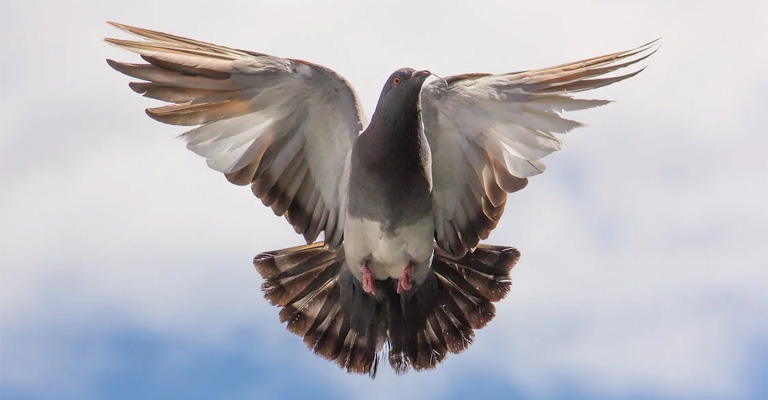
Can A Pet Bird Be Trained To Live Without A Cage And Not Fly Away?
Training a pet bird to live outside a cage without flying away requires careful planning, patience, and consistent effort.
Here are some effective tips to help you achieve this goal:
Gradual Acclimatization
Begin by allowing your bird short, supervised periods outside the cage in a secure and enclosed space. Gradually extend these sessions over time so your bird becomes comfortable with the new environment.
Create a Safe Space
Designate a bird-proofed area with closed windows and doors to prevent accidental escapes. Remove potential hazards and toxic items that your bird might encounter.
Wing Clipping
Consider a gentle wing clip to limit your bird’s flying ability initially. Consult with an avian veterinarian or a professional bird trainer to determine the appropriate clip for your bird’s safety.
Positive Reinforcement
Use treats, praise, and toys as rewards to encourage your bird to return to you. Associating your presence with positive experiences will motivate them to stay close.
Recall Training
Teach your bird a recall command, such as a specific whistle or word. Use it consistently during training sessions, rewarding them generously when they respond to the command.
Harness Training
Introduce a bird harness gradually, allowing your bird to get used to wearing it indoors before venturing outside. A harness can provide an extra layer of safety during outdoor excursions.
Supervision
Always supervise your birds closely when they are outside the cage. Even with training, there’s always a risk of them getting startled and flying off.
Stimulating Environment
Provide plenty of mental and physical stimulation to keep your bird engaged and less likely to become curious about flying away. Interactive toys, perches, and activities will help them stay occupied.
Building Trust
Develop a strong bond with your bird through positive interactions. The more your bird trusts and enjoys your company, the more likely they are to stay close by.
Remember that each bird is unique, and the timeline for training can vary. Some birds may adjust quickly, while others might take more time. Be patient, celebrate small successes, and prioritize your bird’s safety and well-being above all else.
By following these tips and customizing your approach to your bird’s personality, you can increase the likelihood of successfully training your pet bird to live outside the cage without flying away.
What Makes A Bird Fly Away?
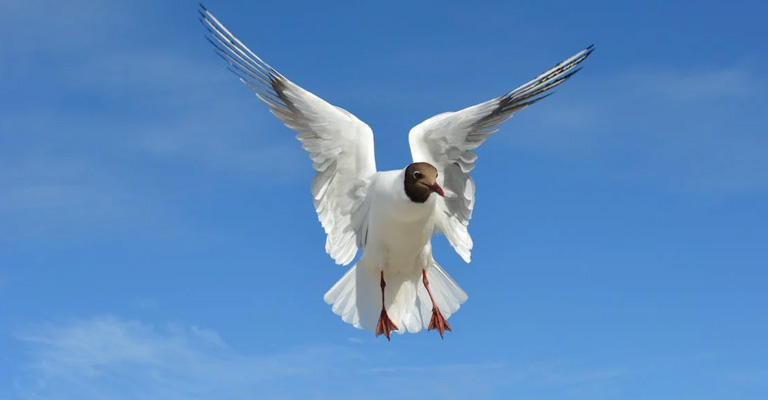
There are many possible situations that can make a bird fly away, either from its natural habitat or from its human owner.
Here are some examples of such situations, along with a brief explanation of why they cause the bird to fly away:
Predator Threat
Birds fly away when they sense a predator nearby, such as a hawk, a cat, or a human.
This is a natural instinct to protect themselves from harm and to avoid being eaten. Birds can detect predators by sight, sound, smell, or movement.
Loud Noise
Birds fly away when they hear a loud noise, such as a gunshot, a firework, or a car horn.
This is because loud noises can startle or scare them and make them think that there is danger around them. Loud noises can also interfere with their communication and navigation.
Unfamiliar Environment
Birds fly away when they are exposed to an unfamiliar environment, such as a new cage, a new room, or a new outdoor location.
This is because unfamiliar environments can make them feel insecure, confused, or curious. Birds may fly away to explore their surroundings, find a safe place, or return to their familiar home.
Hormonal Changes
Birds fly away when they experience hormonal changes, such as during the breeding season, molting season, or puberty.
This is because hormonal changes can affect their behavior and mood and make them more restless, aggressive, or territorial. Birds may fly away to look for a mate, to establish a territory, or to assert their dominance.
Boredom
Birds fly away when they are bored or lack stimulation. This is especially true for pet birds that are kept in cages or indoors most of the time.
Boredom can make them unhappy, depressed, or frustrated. Birds may fly away to seek entertainment, variety, or adventure.
Hunger
Birds fly away when they are hungry or thirsty. This is common for wild birds that need to find food and water sources every day.
Hunger can make them desperate, adventurous, or opportunistic. Birds may fly away to search for food and water, to follow other birds, or to steal from humans.
Socialization
Birds fly away when they want to socialize with other birds. This is typical for flocking birds that live in groups and depend on each other for survival and companionship.
Socialization can make them happy, cooperative, or competitive. Birds may fly away to join a flock, to interact with other birds, or to challenge other birds.
Curiosity
Birds fly away when they are curious about something. This is characteristic of intelligent birds that have a high level of cognition and learning ability.
Curiosity can make them inquisitive, playful, or mischievous. Birds may fly away to investigate something interesting, to try something new, or to have some fun.
Escape
Birds fly away when they want to escape from something. This is possible for captive birds that are kept as pets or in zoos.
Escape can make them rebellious, defiant, or adventurous. Birds may fly away to break free from their cage, to avoid their owner, or to explore the world.
Which Bird Can Live Without A Cage And Not Fly Away?
There are some bird species that can be trained to live without a cage and not fly away, depending on their personality, upbringing, and care.
However, this requires a lot of patience, trust, and safety precautions from the owner. Here are some birds that can live without a cage and not fly away:
Cockatiel
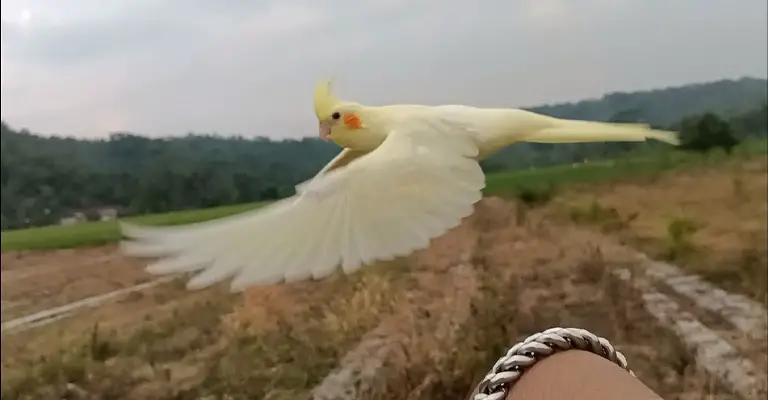
Cockatiels are small parrots that are very popular as pets. They are gentle, sociable, and intelligent and can bond well with their owners. They can also learn to whistle, mimic sounds, and perform tricks.
Budgerigar
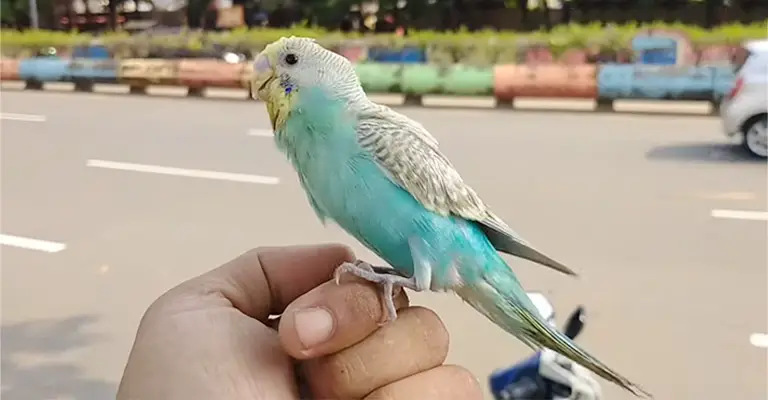
Budgerigars (or parakeets) are another small parrot species that are very friendly and playful.
They can be easily tamed and trained and can learn to talk and imitate noises. They also enjoy spending time with their owners and other birds.
Dove
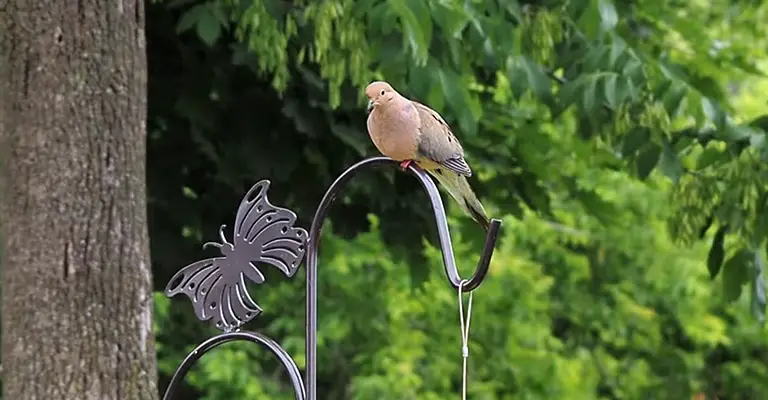
Doves are peaceful and quiet birds that make great pets for people who want a gentle and calm companion.
They are easy to care for and handle and can show affection by cooing and snuggling with their owners.
Green-Cheeked Conure
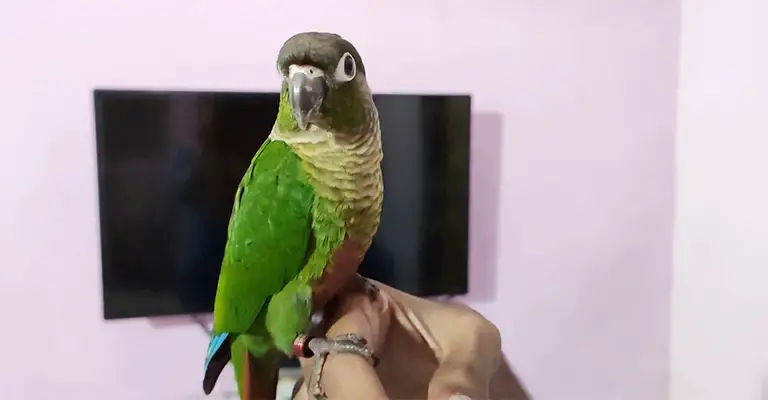
Green-cheeked conures are colorful and lively birds that have a lot of personality. They are very social and love to interact with their owners and other birds. They can also be trained to do tricks and say words.
Cockatoo
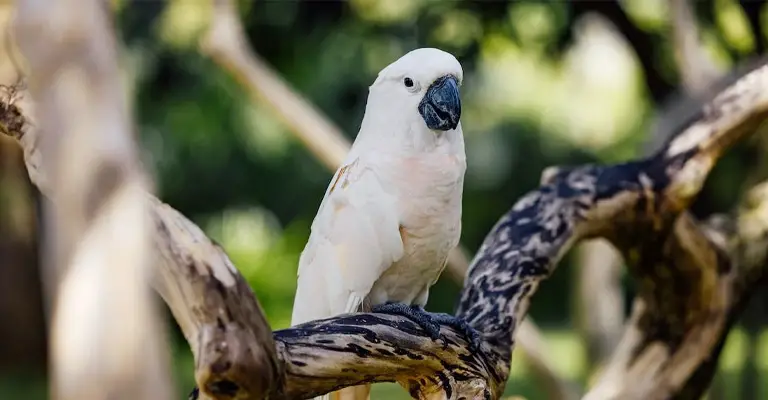
Cockatoos are large and beautiful birds that are very loyal and affectionate to their owners.
They crave attention and cuddles and can form strong bonds with their human companions. They can also be very smart and learn to talk and mimic sounds.
Hyacinth Macaw
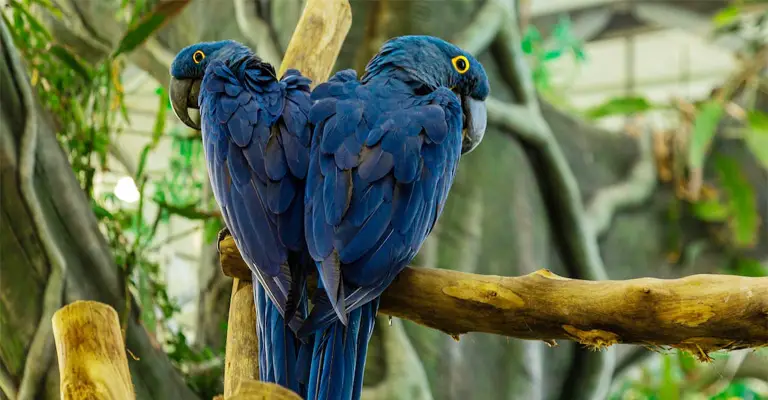
Hyacinth macaws are the largest of all parrots, but they are also very gentle and sweet-natured.
They are very intelligent and can learn to communicate with their owners through words and gestures. They also need a lot of space, toys, and socialization to keep them happy.
Parrotlet
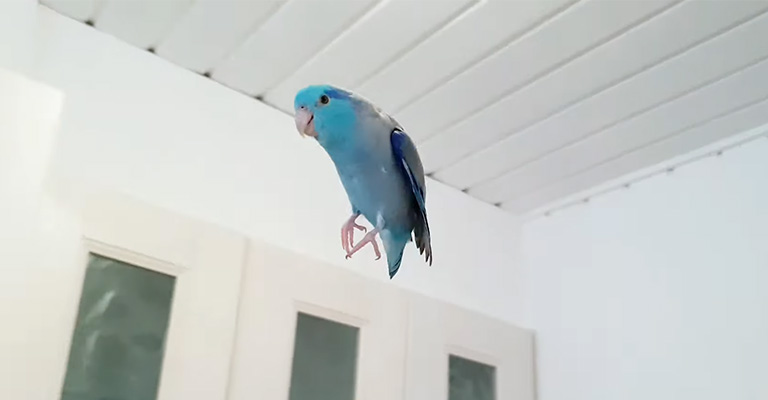
Parrotlets are the smallest of all parrots, but they have big personalities. They are very active, curious, and playful and can bond well with their owners.
They can also learn to talk and do tricks, but they can be a bit nippy if not handled properly.
African Grey Parrot
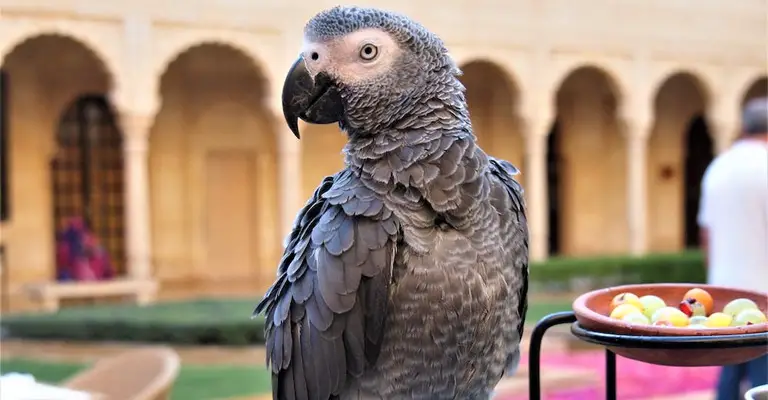
African grey parrots are considered to be one of the most intelligent bird species in the world. They have amazing abilities to talk and mimic sounds, as well as understand concepts and emotions. They are very social and need a lot of attention and stimulation from their owners.
Finch
Finches are small and cheerful birds that make pleasant sounds and add beauty to any home. They are not very tame or cuddly, but they can be friendly and enjoy the company of other finches. They are also easy to care for and do not require much interaction from their owners.
FAQ
Yes, it’s possible with careful training. Start with supervised, short outdoor sessions and gradually extend them.
Build a strong recall command, offer positive reinforcement, and consider wing clipping or harness training for safety.
Create a secure environment by removing hazards and toxic items. Close windows and doors, cover mirrors (which might confuse birds), and ensure there are no open spaces that could lead to accidental escapes.
A proper wing clip, done by a professional, doesn’t harm your bird. It temporarily limits flying ability for training purposes. Feathers will grow back during molting, and it doesn’t affect their overall health.
Most birds can be trained, but some species, like budgies and cockatiels, tend to adapt better.
Consider your bird’s personality, instincts, and willingness to interact with you before attempting cage-free training.
Patience, consistency, and building a strong bond with your bird are crucial. Gradually acclimate your bird, use positive reinforcement, and prioritize their safety.
Always supervise them outdoors and ensure they have enough mental and physical stimulation indoors.
Conclusion
The aspiration to train a pet bird to live without a cage and prevent it from flying away is a journey that demands dedication and vigilance.
The heart of this endeavor lies in cultivating a relationship built on trust, clear communication, and the fulfillment of both the bird’s innate instincts and the owner’s desires.
While some birds may readily adapt to this lifestyle, others might require more time and effort.
The ultimate success lies not just in providing a safe and enriched environment but also in nurturing a deep bond that transcends confinement.
By valuing the bird’s autonomy while fostering an unbreakable connection, the dream of a cage-free existence can indeed become a harmonious reality for both the pet and the owner.